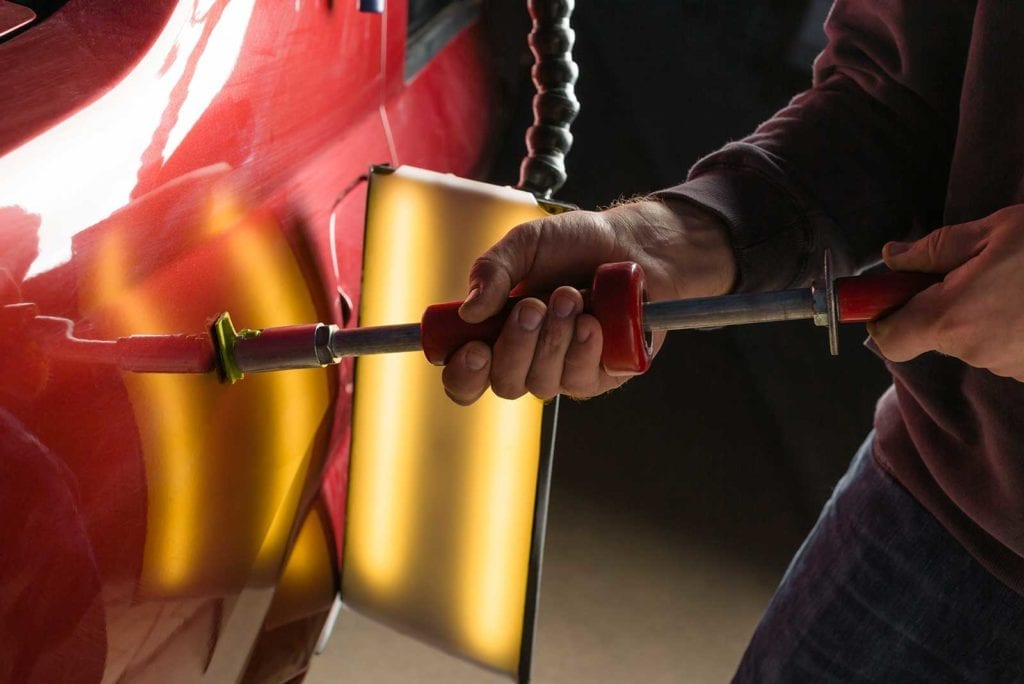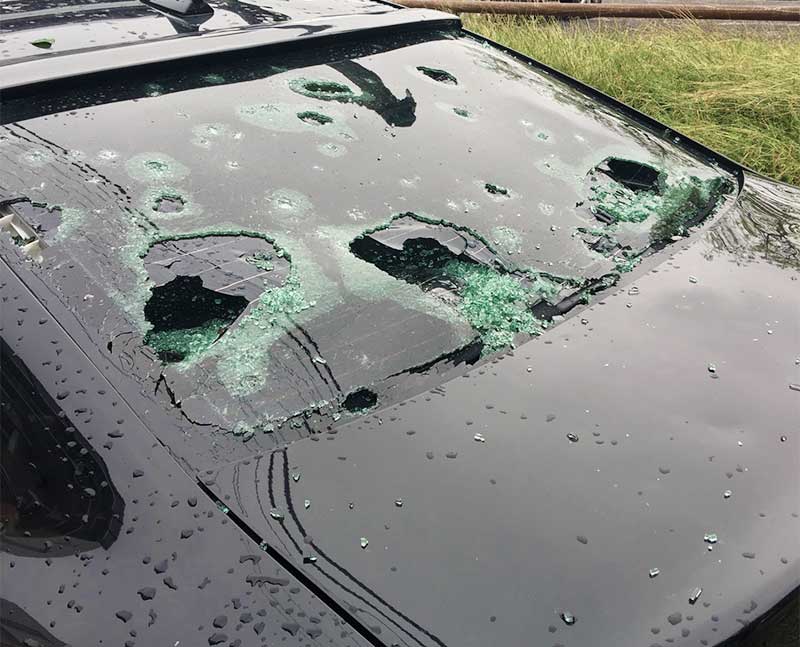
What Is the Cost of PDR For Hail Damage? An In-Depth Look Into the PDR Pricing Matrix
Colorado is hit by hail more often than most states, and if your car suffered hail damage, you want to know how much the repair will cost. Paintless dent repair (PDR) is the industry standard method of fixing hail dents. It is faster and more affordable than traditional dent repair. And it’s non-intrusive and keeps your factory paint warranty valid. For most vehicles, PDR for hail damage typically ranges from $50-$150 per dent, depending on the size, number, and location of dents, along with factors like panel material and removal requirements. How does the repair shop decide what they’ll charge? How does your insurance company determine what they’ll pay? Find out more about the process of making a hail damage repair estimate. Learn how the PDR pricing matrix works and how it affects what you’ll pay to repair your car. What Goes Into a Hail Damage Repair Estimate? Several factors go into an estimate for auto hail damage repair. One important factor is the paintless dent repair (PDR) itself. The first part of the PDR cost reflects the time and labor for a PDR technician to fix the dents. The second component is the cost to remove and install (R&I). This part of the estimate includes the labor cost to remove and reinstall parts on the vehicle. This gives the technician access to do the PDR. If hail damages parts on the car like the windshield that will need replacement, your estimate will have a part replacement cost. If the hail damaged the paint, the estimate will include the cost of traditional bodywork in addition to the PDR. These costs include time for the body and the paint. They also include the price of paint and other materials. Finally, your estimate will include any sales tax. Understanding what goes into your estimate is crucial, but getting a shop that values quality and honesty makes all the difference in your experience and your car repair results. → Get Expert Auto Hail Repair in Denver (With Hassle-Free Insurance Assistance) Estimating the Cost of Your Paintless Dent Repair To estimate the cost of your paintless dent repair, the insurance adjuster and the PDR technician will use a PDR cost matrix. The cost matrix or pricing matrix is a chart that helps to determine the cost of repairs based on how many dents are on each vehicle panel and how large the dents are. Insurance companies approve a version of the PDR pricing matrix for their adjusters to use. If the repair shop uses the same matrix as the insurance company, your insurance is more likely to approve your full claim. Not every repair shop follows insurer-approved standards. Choosing a highly experienced PDR provider who understands how to work with your insurance provider can make all the difference between full coverage and unexpected out-of-pocket costs. → Discover the Best Paintless Dent Repair in Denver (+ Lifetime Warranty Included) How Does the PDR Pricing Matrix Work? The PDR cost matrix is straightforward. In a few steps, it will give you a basic estimate for the paintless dent repair. Format of the Cost Matrix The PDR cost matrix lists all of the panels on the vehicle in a column on the left side. Most versions of the pricing matrix start with the hood and roof and then move through the other panels like roof rails, left front and rear doors, left and right fenders, etc. Across the top of the chart are categories of severity based on how many dents there are on a panel. For example, light damage might be between 6 and 15 dents and moderate damage from 16 to 30 dents per panel. Within each category are columns for the size of the dents. The size categories are dime, nickel, quarter, and half dollar. Based on the number of dents and their average size, the pricing matrix gives a dollar amount per panel. For example, a left rear door panel with moderate (16 to 30 dents), nickel-sized damage might cost $200. If the same number of dents were quarter-sized, the estimate increases to $225. The pricing matrix also has a column to add R&I if necessary. Insurance companies use “book time” to determine how much they’ll pay for R&I. Our PDR technician also uses book time for the estimate, so that your insurance will cover the full cost. Adding Markup Costs Some types of vehicles or types of damage require a price markup. The additional cost is because they are more difficult to repair. For example, if a panel is made of aluminum or high-strength steel, the markup is 25%. Here are a few popular upcharges: Oversized Dent Any dents bigger than half-dollar size is considered an oversized dent, and costs $40 extra, per dent. Aluminum and High-Strength Steel (HSS) If a panel is made of aluminum or high-strength steel, it will require extra work to smooth out the dents, therefore require more cost – 25% extra. For example, 15 quarter-size dents on the hood normally cost $175. But if the hood is aluminum, it will cost $175 x (1+25%) = $218.75 Glue Pull If the PDR process requires the glue-pull technique, to apply specific hot glue to a tab that is on to the damaged area and then pull the glue tab to lift dents, it requires 25% extra cost. Other reasons for markups include: Double metal, which applies to the roof rails Extended or tall roof, like an SUV, van, or extended cab truck etc. Combining the initial estimate from the PDR pricing matrix with any R&I charges and additional markups gives the total estimate. These additional costs account for the extra time, tools, and skill it takes to properly repair more complex damage, like oversized dents or aluminum panels. See how high-quality PDR can restore your car to its original, factory-finish condition. → Before and After Paintless Dent Repair PDR Cost Matrix Calculator Digital PDR cost matrix charts are increasingly popular. If you are looking for a rough PDR estimate,














 Auto hail
repair
Auto hail
repair
 Hail
damage cost calculator
Hail
damage cost calculator  Before/After
Before/After
 PDR cost
101
PDR cost
101
 About
StormWise
About
StormWise
 reviews
reviews  Articles
Articles  FAQs
FAQs
 resource & contact
resource & contact